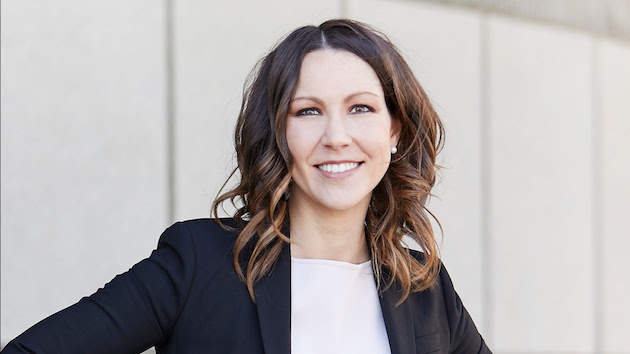
The LA Dodgers call it the “War Room.” It appears to be a conventional corporate gathering space with the obligatory long table and chairs — until the entire wall at the end of the room begins to glow and come to life. This vastly complex computer screen, at lightning speed, is capable of calling up, comparing, and analyzing the most in-depth data on every player in the major and minor leagues, along with every fan who’s ever used a credit card to buy a Dodger Dog or knock back a Bud.
After seeing the War Room in action, I wanted to find out to what extent data-mining and analytics are being applied in the performing arts. The answer is — a great deal. As Duncan Webb, the president of Webb Management Services Inc. (aka Webb Mgmt, a major consultant to many performing arts organizations) puts it, “If you’ve bought a ticket, we know who you are.”

There are, however, many questions to be explored: How much personal data is being gathered on ticket buyers and patrons? How is that data separated and analyzed, and to what end? Should analytics play a role in programming as well as marketing decisions? And should audiences be worried about the level of data that is being gathered about their buying habits, taste in music, family demographics, etc.
In his youthful student days in Toronto, Duncan Webb envisioned a life in the theater. The dream faded, however, when he came to the realization that he was not a particularly good actor. His true talent lay in the high-finance realm of banking. Then he discovered a way to bring the two aspects of his life together by becoming an operations and financial consultant to theaters. In 1997 he formed Webb Management devoted to, as Webb describes it, “providing front-end feasibility studies, business and strategic planning relating to the operation and development of theaters.”
Over time, the company has expanded to offer consulting services to a number of America’s major performing arts presenters including the Younes and Soraya Nazarian Center for the Performing Arts at California State University, Northridge, where Webb works closely with its executive and artistic director, Thor Steingraber.
As a seasoned veteran in the field of arts consulting, Webb was in a unique position to tell me about how important analytics is in decision making.
“The grim reality,” he said, “is that at the end of the day, arts organizations have access to a wealth of data and they don’t know how to use it, beginning with the days of Ticketmaster, when you could print out lists of tickets sold and build mailing lists, to the highly sophisticated automated databases and analytic systems we have today. The technology keeps getting better, but the use of it by the arts sector still hasn’t really changed. We have this valuable amount of information and don’t use it, mostly because arts organizations [unlike the Dodgers] don’t have the necessary budgets to hire the people who can understand their databases and today’s megadata metrics.”

Just because you can’t compete at the billion-dollar level of the Dodgers, says arts analytics champion Aubrey Bergauer, is not a reason to avoid the game. There are many ways, she points out, that orchestras and opera companies, large and small, can maximize easily accessible, low-cost data.
“What is universally true is the need to analyze data by learning to ask the right questions. It’s not so much about an organization’s budget size, as it is about how savvy the database is and how skilled the people are at interpreting it.”
Bergauer was right out of college (with degrees in Music Performance and Business) in 2005 when she went to work for the Seattle Symphony and then Seattle Opera. She gained national recognition when her leadership as executive director of the California Symphony propelled the organization to double the size of its audience and nearly quadruple its donor base.
“I essentially developed my knowledge of data analysis out of necessity,” she recalls. “I was 22 when I started at Seattle Opera and I quickly realized as the young kid in the office my opinion was not going to get me very far. It was a time when digital marketing was coming to the forefront. Smartphones came out and I found myself using all this new technology in my daily life. I began to think about how it could be applied to benefit the organization and answer key questions. I thought it had such potential.”
In today’s market, Bergauer is convinced, data analytics are the gold standard of forward-looking arts management.
“We have access to so much patron/consumer data that comes with every interaction,” Bergauer explains. “In addition, every organization, no matter how big or small, has access to its own online database. It’s a resource that is often under-utilized beginning with the data you get for free from Google Analytics (which measures website performance). Facebook, Twitter, and Instagram all have built-in analytics tools, right up to the most sophisticated programs like Tessitura Analytics. The data is there. It’s a question of harnessing it for its full potential. The problem is, the sheer amount of data can be overwhelming. How do we slice and dice it to get what we need?”
The solution, Bergauer emphasizes again and again in her popular seminars, is learning to ask the right questions.
“What I often see is reliance and decision-making based on data-driven analytics, but without applying a nuanced approach to how that data is used. Ideally, we want to test a project and define what is going to make it successful, then go seek the analytics that will answer that question. Instead, what I see so often, is a tendency to ask, what is our dashboard — the top metrics we’re going to present at the next board meeting? Definitely the potential for revenue is important (everyone wants to make money), but there are often other factors that should, and are often not considered.
“Organizations are generally good at determining and tracking tickets sales,” Bergauer continued. “But this is an example of asking the wrong question. Let’s look at different metrics like how many first-time ticket buyers came back again? What lever do we need to pull to move that needle? There’s the big issue of how to improve musical education to create more informed listeners. And there’s the question of exclusivity and diversity. How do we make more people feel that the classical music concert hall is a place where they can feel comfortable and accepted?”
The Comeback Trail From COVID
As Thor Steingraber points out, we are living in a BC (before COVID), DC (during COVID) and, hopefully, an AC (after COVID) reality. He sees it as a time of transition. But how long that transition is going to take, especially economically, is anybody’s guess. Can analytic data tell us when and what the comeback trail will look like?

“As far as analytics go, I don’t believe there is such a thing as a reliable data trend from 2019 to the present day because the data trends that predate the pandemic have been disrupted,” he explains. “Will these disruptions be temporary or permanent? We just don’t know. What we really need to do now is begin to establish entirely new baselines for our analytics.”
When the pandemic put all of America’s arts organizations in the same boat, Steingraber said, there was a realization that sharing collected data could be mutually beneficial.
“I think the most interesting thing that happened during the pandemic,” he points out, “is that a number of major institutions joined together to do a big national survey about audience willingness to come back to the hall, and to what extent the digital content they were producing was being watched. The X factor we’re facing now, is how many people are willing to sit for two hours with a mask on? It’s impossible to quantify that. Consumer behavior is all over the map. The one metric we’ve identified as a definite positive, is the number of our audience members that identify as Latinx, Hispanic, or Spanish-speaking. That number has risen from 11 percent to 23 percent.”
In terms of overall ticket sales, however, Steingraber said the Soraya’s concert attendance has been running at about 66 percent of prepandemic levels. And in a similar conversation with the Los Angeles Philharmonic’s CEO, Chad Smith, he said concert attendance at Walt Disney Concert Hall was also down by an average of 33 percent. Fortunately for the LA Phil, the prospect of a full season at the open-air 17,000 seat Hollywood Bowl is not far off on the horizon.
One of the biggest debates surrounding the use of analytics, is the role data analysis should play in programming decisions. At one end of the spectrum is Steingraber, who says using data analysis to fine-tune programming is anathema.
“If we used data that way, we would only book the most popular programs. It would narrow the field so dramatically young artists would never have the opportunity to get a start, entire genres of performance would be eliminated, and controversial works would never be performed.”
I welcome my marketing team into the programming room to a certain extent. Not all organizations do that. And some organizations let the marketing team drive programming. There's a vast range of belief about that. But if we programed solely based on analytics the performing arts field would not resemble what it does today."
That, says Aubrey Bergauer, is crazy.
“In classical music we have to be very careful about what we put under the guise of artistic decision making,” she feels. “On one hand, what we do is subjective — we create art. But “artistic liberty” can be stretched too far and works as gatekeeping. It may be unintentional, but that’s where we need to be careful. Any time we have adequate information to move toward an objective decision, that’s a good thing. It’s a question of balance. When the data indicates that a decision is likely to make money (and who doesn’t want that?) people tend to buy in. There’s no shame in that.”
Steingraber, on the other hand, believes, “We are a nonprofit organization. We don’t make money based on whether we win or lose games like the Dodgers. We program based on the belief that the arts are an important public asset.”
That being said, Steingraber and Duncan Webb work closely together. "[They are] a very sophisticated consulting firm. Every three years we run a very extensive report. They'll study your organization in any number of different ways." Webb, for his part, said he definitely sees a role for analytics in programming, though he concedes there’s historically been a lot of resistance.
“If you’re making assumptions about what shows are going to sell based on a gut reaction, that’s the best time when analytics can help you make informed decisions. The problem is there’s this cultural image of the impresario who knows how to pick the shows and has their finger on the pulse of the market. Why would you do that, rather than collecting the data that would tell you whether your show is more or less likely to sell?”
Data Mining and Surveillance Capitalism
During a recent episode of his HBO series, Last Week Tonight with John Oliver, the host turned his attention to the fortunes being made in “data mining” and the companies that offer personal consumer information for sale. In no uncertain terms, Oliver said we are currently living in the era of “surveillance capitalism.”
Without my prompting, Duncan Webb referenced the same program.
“John Oliver is exactly right,” he confirmed. “There are companies that are packaging and selling data on consumers. All of that is real. The problem is, in the arts we don’t have the money to gather that level of data. At the same time, our customers are becoming increasingly nervous about privacy issues and are fighting back by limiting what information they let out. People are being bombarded with surveys and our response rate is dropping.
Are we, therefore, headed for a world where our every move, transaction, and web search is constantly tracked, recorded, and sold as data?
“We’re already there,” says Bergauer categorically. “I guarantee it.”
NB: As originally published, this article reported, incorrectly, that Thor Steingraber's marketing team were not invited to programming meetings. We regret the error.

